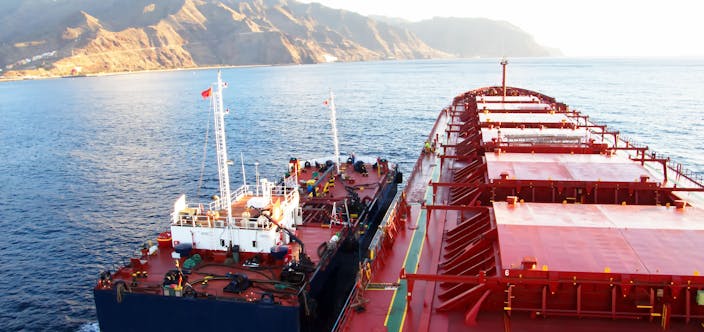Decisive Decarbonisation
The shipping industry accounts for between 2.5 % and 3% of global greenhouse gas (GHG) emissions. This means that it cannot tackle the issue of climate change alone; however, someone needs to play a leading role, and so the maritime sector has been tasked with the goal of reducing 50% of its annual GHG emissions by the year 2050 (compared to 2008). The shipping industry is going through major changes in its sourcing and use of fuels, and it can be easy to be swept up in a flood of information. To encourage widespread action, we want to provide some simple but key considerations for Alandia’s customers.
Practical Methods for reducing fuel consumption
Reducing fuel consumption is a good way to immediately begin taking action to lessen emissions.
– Slow steaming significantly reduces fuel consumption and despite longer voyage time is still beneficial. According to calculations by Wärtsilä (2010) a reduction from 27 knots to 18 knots can save 75% fuel. With extended journey time accounted for, this is still a 59% fuel saving. Values will naturally be affected by other factors such as loaded condition, trim, and weather, but the positive results are robust.
– Periodic hull and propeller cleaning reduces fuel consumption and increases energy efficiency.
– Careful weather routing to avoid wave and wind resistance saves time and can reduce fuel consumption by 3%, according to IAMU (2015).
– Trim optimisation for different combinations of draft and speed can be used to curb emissions and can be utilised regardless of the type and age of the vessel.
– Fuel optimisation systems gather data from various parameters internal and external, to present recommendations for best possible fuel-saving routes and provide performance analysis.
– Minimising ballast and bunkers onboard, within reason and as per safety margins, also helps to reduce fuel consumption.
– Cold ironing involves the provision of shore-power to meet the energy demands of vessels in port, eliminating the emissions of auxiliary engines whilst ships are berthed. The grid which powers the vessel needs to be an environmentally friendly energy source.
Some considerations for matching greener solutions to vessels
Reducing fuel consumption can only take us so far: There is a need to change over to greener fuels and it can be hard to know what to option/s to choose. The best solution is very different depending on the vessel type, size, and trading route. Another important consideration is whether the ship is a newbuild or an existing vessel which requires retrofitting. The lifespan of merchant ships is on average 20+ years, meaning the vessels being built today will likely still be in operation close to or in the year 2050.
Source: https://ec.europa.eu/clima/system/files/2020-05/swd_2020_82_en.pdf
For short transit routes (up to approximately 45 nm dependent on battery capacity), electric ships may be a viable option, whereas for large deep-sea vessels we are seeing a shift toward LNG as a transition fuel, and carbon-neutral alternatives such as methanol. Another factor affecting the ship-owner’s choice is the differing energy content of alternative fuels and the corresponding tank size needed. For example, to maintain the same energy content as MGO, methanol would need a tank that is 2.5 times bigger.
Source: Bureau Veritas, M&O, globalmaritimehub.com/what-could-be-the-best-fuels-to-decarbonise-shipping.html
Fuel options and their individual pros and cons
Sourced from Bureau Veritas Marine & Offshore 2022.
Technology options should be considered alongside fuel options and include fully electric and electric hybrid ships, hull designs aimed at energy efficiency, carbon-capture technologies, and wind-assisted propulsion systems. Wind is free, zero-carbon, and an inexhaustible source of energy, which is appealing if the operating region has the right weather conditions.
Challenges and risks to overcome
– Fuel pricing: A key requirement for getting the maritime industry to decarbonise is that it needs to make business sense. Without incentives in place progress will be hindered. Fuel prices fluctuate enormously and whilst it remains cheaper to use more traditional fuels they will continue to be considered as the main option
– Safety: Some alternative fuels come with safety challenges. For example, ammonia is toxic, hydrogen is explosive, and methanol is both toxic and flammable.
– Availability: Widespread availability of fuels and bunkering facilities are prerequisites for the transition, but there are challenges associated with scaling up the production of greener fuels such as biomethane and synthetic methane. Bunkering facilities for in-demand fuel types need to be available globally, which requires huge investment in infrastructure.
– Technology development: It takes time for fuel manufacturing technology and ship & engine technology to develop and mature. These technologies need to be more widely available to assist with the transition.
– Regulatory framework: The transition to greener fuels must be supported by an effective regulatory framework. The creation and implementation of legislation (for example, to enable effective enforcement) is complicated and time consuming; a difficulty when decarbonisation is so time sensitive.






